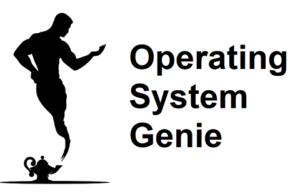Each of the different versions of Windows were made based on the speed and ability of the computers at the time.
But, each year computers get faster and faster, and operating systems can utilize more and more resources such as RAM.
A low end computer has less resources than newer computers, and in this article, I will cover if Windows 10 is good for a low end PC.
As a general rule, Windows 10 is not good for a low end PC. Windows 10 requires a minimum of 8GB to provide a smooth and enjoyable user experience, which low end PCs typically don’t have. Windows Vista is the best option for low end PCs that have 4GB of RAM or less. The next best is Windows 7.
Microsoft explains the minimum specs that a computer should have to run Windows 10, however, with these minimum specs it will run reasonably slow, and won’t be nice to use.
Below, I will provide comprehensive data that shows a side by side comparison of how fast each version of Windows is, so you can see how much faster or slower Windows 10 is compared to the other versions of Windows.

What Version of Windows Is Best for Low End PCs
Each version of Windows makes use of the current specs of computers. Lower end PCs often have significantly less RAM, a slower processor (CPU), and often have an onboard graphics card, instead of a dedicated graphics card .
.
As a result, they are a lot slower, so here is what version of Windows is the best for low end PCs.
Overall, Windows Vista is the best version of Windows for low end PCs. It uses the least amount of resources, and is around 30% faster than the next best option which is Windows XP. It also has a nearly identical user interface to Windows 7, which is a lot slower but more popular.
Below are the results of an experiment where each of the different versions of Windows were installed onto the same computer, and then the speed was tested.
There were 14 different metrics looked at for each of the Windows operating systems:
- Windows XP
- Windows Vista
- Windows 7
- Windows 8
- Windows 10
- Windows 11
To confidently conclude which is the fastest, the computer specs were kept exactly the same, the only thing that was changed is the operating system.
I totalled the total time it took to perform each of the tasks such as starting up and logging in. Here’s a table that shows how fast they were overall, rated from fastest to slowest:
| Version of Windows | Total time for each of the processes tested |
| Windows 8 | 01:52:00 |
| Windows 11 | 02:01:25 |
| Windows Vista | 02:14:00 |
| Windows XP | 02:27.75 |
| Windows 7 | 02:58:75 |
| Windows 10 | 03:52:25 |
From the table you can see that Windows 8 is the fastest overall, followed by Windows 11, and Windows Vista. However, it’s worth noting that Windows 8 has a dramatically different user interface to the other version of Windows.
Overall, most people do not like the user interface of Windows 8. So, for that reason Windows 8 is not the best option. Just because, it’s very difficult and confusing to use, even after you get used to it.
Windows 11 is a very good option, however, there is an issue with it which I will explain further below. Essentially, the amount of memory it uses when idling is very high. This means if you’re running more than one program at once – which is very common – it will be slower.
This leaves Windows Vista, XP, and Windows 7. Windows 7 is the most recent version of Windows so is your best choice. It runs perfectly well on old computers. But, if you purely want the fastest operating system then install Windows Vista.
Here’s two tables that shows the results:
| Test | Windows XP | Windows Vista | Windows 7 |
| Start up | 00:40:00 | 00:46:00 | 01:22:00 |
| Opening an program | 00:12:00 | 00:10:00 | 00:10.50 |
| Opening a website | 00:13:00 | 00:14:00 | 00:13:50 |
| Copying a file to a new location | 00:20:00 | 00:05:00 | 00:09:00 |
| Benchmark test tool in Windows | 962.7 | 1287.1 | 1728.7 |
| Opening a game (minecraft) | 00:29:00 | 00:11:00 | 00:31:00 |
| Loading a level in a game (minecraft) | 00:17:00 | 00:26:00 | 00:11:00 |
| Frame rate (FPS) in game (minecraft) | 12 FPS | 14 FPS | 14 FPS |
| Logging off | 00:07:00 | 00:06:50 | 00:06:00 |
| Logging in | 00:03:00 | 00:00:25 | 00:00:25 |
| RAM & CPU usage | 853 MB, 0% | 1.36GB, 1% | 1.2GB, 0% |
| Opening Microsoft Office program | 00:01:25 | 00:01:00 | 00:01:00 |
| Rendering a video | failed | 00:06:00 | 00:06:50 |
| Shutdown time | 00:05:50 | 00:08:25 | 00:08:00 |
| Time total | 02:27.75 | 02:14:00 | 02:58:75 |
Overall, Windows Vista performed the fastest, but Windows XP was only slightly behind. Windows 7 was significantly slower. Now, let’s take a look at the newer versions of Windows:
| Test | Windows 8 | Windows 10 | Windows 11 |
| Start up | 00:26:00 | 01:09:00 | 00:42:00 |
| Opening an program | 00:00:25 | 00:00:50 | 00:00:50 |
| Opening a website | 00:13:00 | 00:18:00 | 00:16:00 |
| Copying a file to a new location | 00:10:00 | 00:21:00 | 00:11:00 |
| Benchmark test tool in Windows | 1692.5 | 926.8 | 1493.7 |
| Opening a game (minecraft) | 00:23:00 | 01:29:00 | 00:14:00 |
| Loading a level in a game (minecraft) | 00:15:00 | 00:12:00 | 00:11:00 |
| Frame rate (FPS) in game (minecraft) | 14 FPS | 15 FPS | 12 FPS |
| Logging off | 00:02:50 | 00:05:00 | 00:09:00 |
| Logging in | 00:13:00 | 00:00:25 | 00:00:50 |
| RAM & CPU usage | 2.2GB, 4% | 2.54GB, 10% | 2.77GB, 25% |
| Opening Microsoft Office program | 00:00:25 | 00:07:00 | 00:03:00 |
| Video editing | 00:07:00 | 00:07:25 | 00:07:25 |
| Shutdown time | 00:02:00 | 00:02:25 | 00:07:00 |
| Total | 01:52:00 | 03:52:25 | 02:01:25 |
Windows 8 was the clear winner, and Windows 11 was not far behind. But, Windows 10 is significantly slower than all other versions of Windows.
How Much RAM Do You Need to Run Windows 10 Smoothly
RAM is one of the main factors that controls how fast a computer loads. To run an operating system smoothly, and open programs, and games fairly fast there is a certain amount of RAM a computer needs. Here is how much RAM you need to run Windows 10 smoothly.
On average, 8GB of RAM is needed to run Windows 10 smoothly. The minimum RAM recommended by Windows is 1GB for the 32-bit version of Windows 10, and 2GB for the 64-bit version of Windows 10. But, with that amount of RAM a lighter weight operating system such as Windows 7 is best.
I personally run Windows 10 and have 8GB of RAM. It works perfectly smooth, and opens fast enough that you don’t get frustrated that it’s too slow.
It has also been shown in the independent tests above that Windows 7 is significantly faster than Windows 10 across the board.
If you have a lot of RAM the speed difference won’t be noticeable, but if you have 4GB of RAM or under, Windows 7 is a better option.
It’s also typically possible to install more RAM onto a computer. RAM is fairly inexpensive. The main thing is to match the type of RAM to the type of motherboard slot you have.
What Windows Versions are Good For Low End PC
Low end PCs run slower, and therefore, you should use a version of Windows that uses the least amount of resources. Here are which versions of Windows are good for low end PCs.
Overall, Windows 7, Vista, or XP are good for low end PCs. Windows Vista uses the least resources, and is the fastest loading, followed by Vista, and the Windows 7. To have the fastest low end PC you should use Windows Vista. But, most programs and games only support Windows 7.
Windows Vista is your best option if you use your computer for work, school or university. Whereas, for gaming Windows 7 is better. New games, and most of the most popular games can be run on Windows 7, but not on Vista or XP.
Sources
Testing data:
